Planting and caring for gazania (gatsania) in the open field and at home
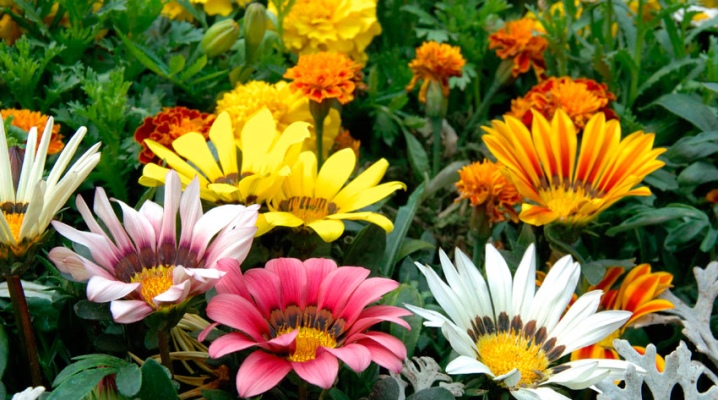
Among horticultural crops, gazania flowers (or gatsania) occupy a special place. Also known as African daisies, these perennials and annuals are prized for their huge buds in rich, vibrant colors. In the material below, you will learn about the features of planting and caring for gazania in the open field and at home.
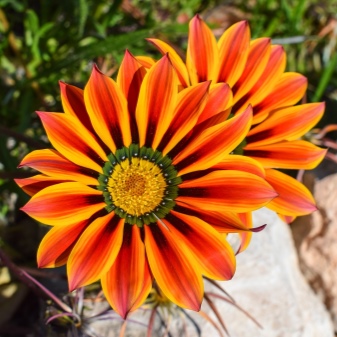
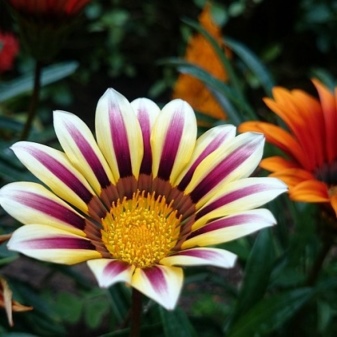
The best varieties and types for planting
In the design of garden plots, as a rule, only three types of gazania are used: long rifle, harsh and peacock.
- Long rifle. This annual gatsaniya is distinguished by a relatively small height (up to 20 cm), as well as bright yellow buds (up to 7 cm in diameter) with a brown core of petals.
- Harsh (also called shiny). A tall horticultural crop that can grow up to 30 cm. It is characterized by oblong reed petals and lemon and peach-colored buds (also has a brown petal base).
- Gazania peacock differs from other varieties in a large number of narrow and long leaf plates. The buds can be orange or rich yellow with dark stripes on the petals.
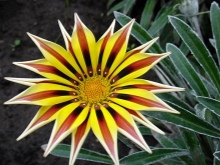

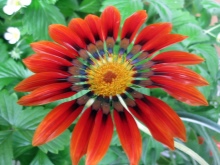
In the case of gazania, not specific varieties are usually used for planting, namely mixes and mixtures of several types. They are distinguished by an unusual shade of buds, a large height and an extended flowering period.
Among the most popular mixes are: "Muse", "Kiss", "New Day", "Triada", "Talent", "Dybrek" and "Potsy".

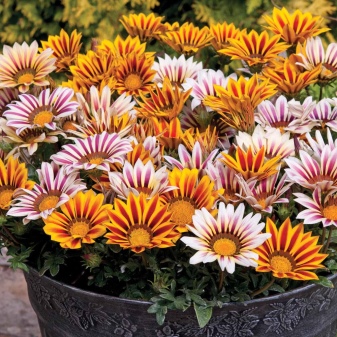
How to grow seedlings?
Most often, gazania seedlings are grown precisely by the seed method - this allows, from the first day of the emergence of sprouts, to control the growing conditions of the plant and adapt it to a specific climate and soil.
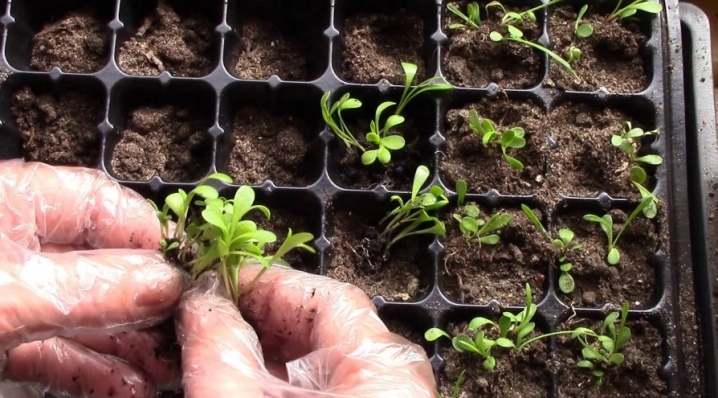
Boarding time
It is better to plant gazania seeds at home in mid-February or in March - this way you can see the first flower buds in June. If the seeds are planted in open ground, then later months with warm nights are selected for this. - end of May or beginning of June. In this case, the flowering period is postponed to August or early September. When planting seeds, consider the characteristics of the selected variety, as well as the flowering time of such plants.
Usually, gatsania seeds sprout about 100 days after planting in the ground. - be guided by these numbers to adjust the flowering period to your site and external climatic conditions.

Planting seeds in open ground
To get healthy and strong gazania seedlings, it is better to buy seeds in trusted gardening stores. When the gardener is not sure about the health of the planting material, he can carry out self-disinfection. For this, gatsaniya seeds are kept in a solution of potassium permanganate for 20 minutes.
As for the selection of the optimal soil, both special purchased substrates for garden plants and mixtures of meadow soil and sand can be suitable here. Soil with gazania seeds should perfectly conduct moisture and air. To disinfect the soil, it is warmed up in advance in the oven or microwave.
Usually, gazania seedlings do not dive - these plants do not particularly well tolerate transplanting to a new place. That is why separate containers in the form of pots are usually chosen for growing seedlings of such flowers.The ideal option for the seeds of this flower would be planting in so-called soil tablets, which must be moistened before planting.
The seeds are buried with tweezers into the tablets to a depth of no more than 1 cm.
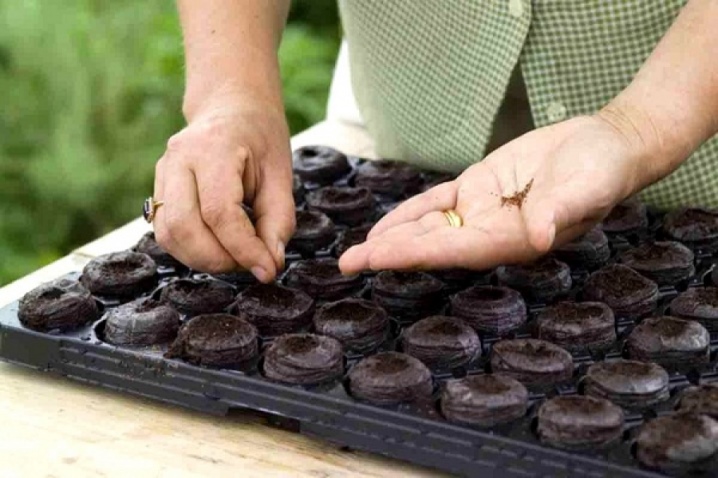
If you want to use standard potting soil for planting gatsania seeds, it should also be placed in pots (with drainage holes) and watered abundantly just before planting. In such conditions, the seeds are also placed in pots to a depth of no more than 2 cm.
After planting, the containers are covered with foil or glass and placed in a well-lit and warm place. - the ideal option would be warm balconies or loggias on the south side of the house. There is no need to put seeds near the windows - it is better to protect them from drafts.
Before the first sprouts of gassing appear, the container is ventilated several times, regularly watered and the condensate that accumulates on the film or glass is removed.
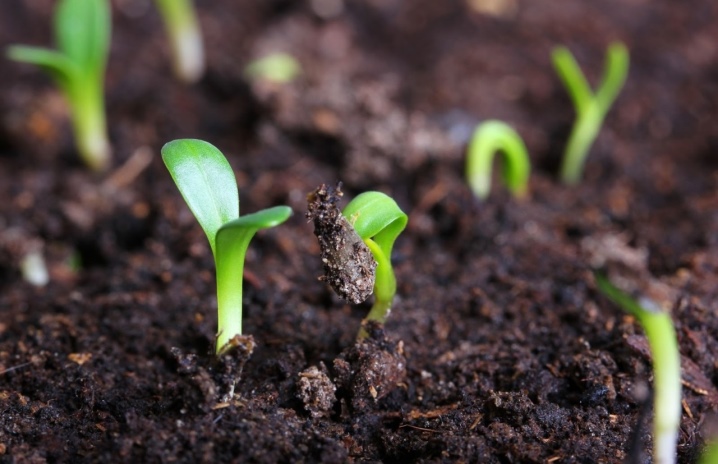
Picking
After about 1-1.5 weeks, a procedure such as picking is carried out (if you grew seeds in large containers). A sign that sprouts need to be transplanted into separate pots, the appearance of 3 full-fledged elongated leaves is... At the same time, the shelter is removed from the container.
To speed up the growth of seedlings, they should also be placed in a well-lit area without drafts. If cloudy weather is observed during this period, it will be useful to organize additional lighting in the form of phytolamps. Before planting seedlings in open ground, it is necessary to strictly monitor the degree of soil moisture - usually the number of waterings is reduced so as not to provoke the appearance of a "black leg".
About 3 weeks before planting seedlings in open ground, the seedlings will need to be hardened. To do this, they can be taken outside for several hours (if the weather is sunny and calm). The duration of such procedures can be increased every day.
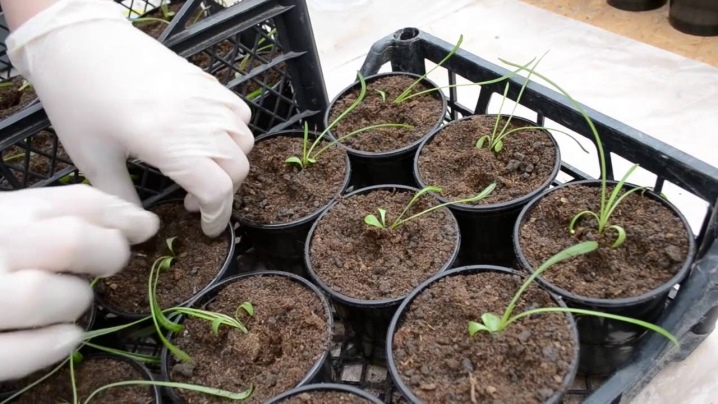
How to plant in open ground?
The process of planting gazania seedlings can be divided into several successive stages: choosing the right time for planting, choosing a place for planting a flower, preparing the soil or substrate, the planting procedure itself.
Planting timing
When it comes to planting gazania seedlings in open ground, there are no definite and strict deadlines. The main thing is that young plants have their own developed roots.
When choosing a planting time, also be guided by the recommended period for planting your gazania variety. - some species of this plant are distinguished by a late flowering period.
Also here you need to pay attention to such a parameter as external climatic conditions in the region.
In more southern regions, gazania seedlings can be planted already in May, while in the north, it is better to shift the planting time to the summer season.
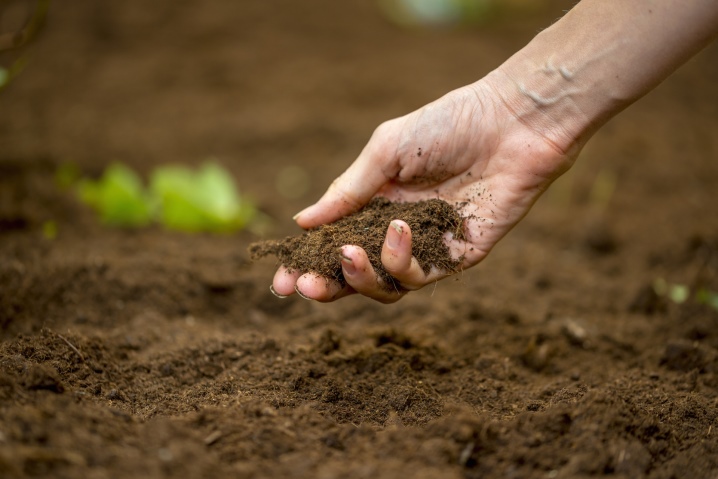
Seat selection
There are several requirements for the landing site, which will be discussed below.
- This should be a draft-free area protected from the wind. Gazania has long enough shoots and heavy buds that can break under a strong gust of wind. In addition, it will drive away pollinating insects from the plant. Ideally, the flower is planted near outbuildings and fences or near large shrubs, which will protect the plant from the wind, but will not obscure the sunlight.
- For planting a plant, it is worth choosing dry and slightly elevated areas, where moisture does not stagnate during rains. High humidity leads to the development of fungal diseases and the appearance of pests such as slugs or snails.
- Most varieties of gazania are excellent for direct sunlight and can grow in completely open areas, however, some gardeners recommend planting it in partial shade so that the flowers of the plant do not lose their saturation in the sun.
- If we talk about the best place in the garden, then gazania flowers will look great both in a single planting and as part of flower beds, rock gardens and borders. The bright flowers of this plant are combined with almost all garden crops.
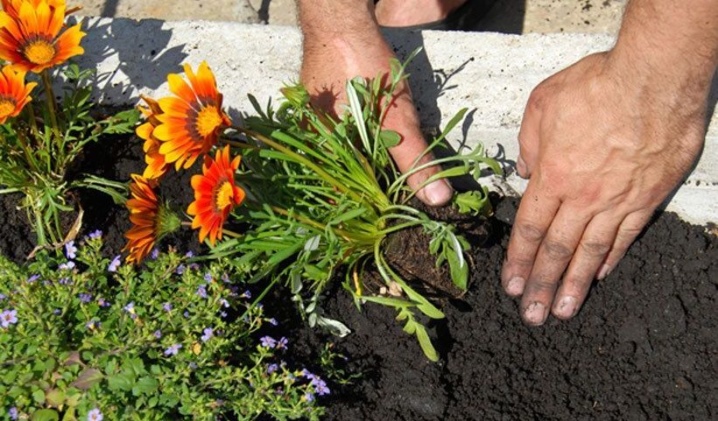
The choice of substrate and soil
Special requirements for gassing planting are imposed not only on lighting and wind, but also on the type of soil. In general, gazania can grow on almost all types of soil. The main condition for the ground is excellent air and moisture conductivity.
These plants feel worst of all on clay and dense soils - this type of soil is specially facilitated with the help of sand. Ideally, the soil for gassing should consist of a mixture of turf soil, sand, peat and deciduous soil. Humus or compost may be added to the soil to help the seedlings settle in their new location.
Before planting the plant, the soil should be dug up to about 15 cm, then add organic fertilizer in the form of humus.
During digging, all weeds, as well as old roots of trees and shrubs are removed from the ground.
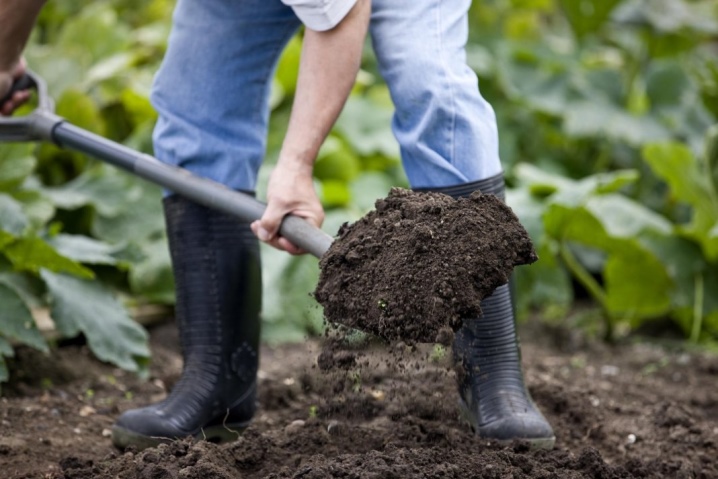
Disembarkation instructions
Below will be given detailed instructions for planting gazania seedlings in open ground.
- After the soil on the site is dug up and fertilized, holes are dug. Keep in mind that gazania seedlings are transplanted to a permanent place along with the mother's lump - that is why the hole for planting should be slightly larger than the lump of earth itself.
- Before planting the sprout, a 5–7 cm drainage layer is organized in the hole. Usually gravel, pebbles, broken brick or expanded clay are used.
- To painlessly remove seedlings of a flower or pots, they should be well watered. After that, using a spatula, carefully remove the earthen lump with the plant from the container.
- When digging holes, keep a distance of at least 15–20 cm between them.
- The plant, together with an earthen clod, is planted in the soil, while all the holes are filled with meadow soil or peat. The soil is slightly compacted and watered.
- The last stage is the organization of a mulch layer, which will retain moisture at the surface of the earth and prevent weeds from growing near the plant.
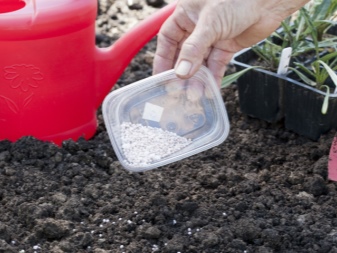
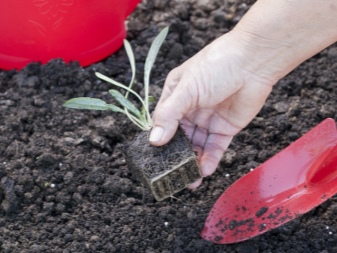
How to care?
Caring for gazania is a simple matter. This is one of the most picky garden plants to care for. The whole care process comes down to regular feeding and rare watering procedures.
Watering
Gazania has excellent drought tolerance and can even withstand prolonged heat without problems. Despite this, moisture is necessary for these plants to form bright and large buds.
In the case of gating, the lack of regular watering is considered safer than excess water. This plant does not tolerate moisture stagnation - in such conditions, the root system of the plant can rot, and waterlogging itself will lead to the development of dangerous fungal diseases.
Perfectly gazania watering is carried out only in arid regions or in summer - in such cases, the gardener should constantly monitor the condition of the soil in the near-stem circle of the plant so that it never completely dries out. This usually means no more than 3 abundant waterings per month. If there is a prolonged absence of rain on the site, then watering can be carried out even daily, however, in this case, a drainage layer is organized in the holes to remove moisture.
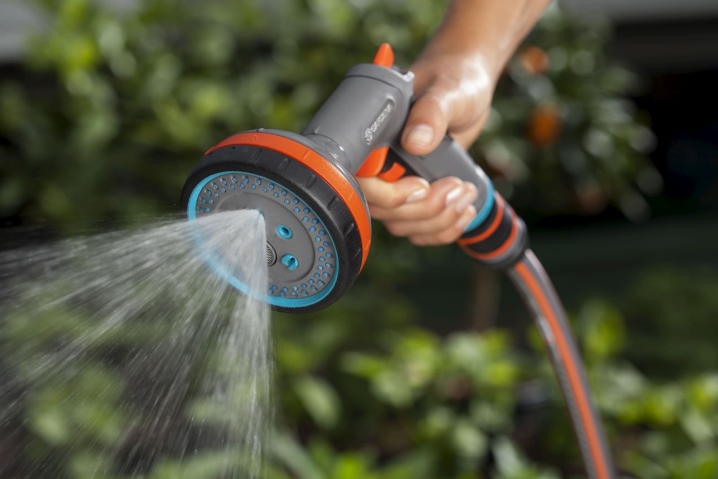
During watering, the soil must be loosened near gazania - this will allow moisture to quickly absorb into the soil and reach the roots. The loosening process also removes all weeds that can interfere with plant growth and suck nutritious juices from the soil.
Fertilizer
Top dressing is necessary for these flowers for abundant flowering, but the amount and regularity of fertilization depends on the fertility of the soil in the area where gazania is planted. If your site has a depleted and marginal soil, then fertilizing should be applied 1 time in 2-3 weeks, if the soil is nutritious and saturated with vitamins, you can feed the flowers no more than 1 time in a month and a half.
Gardeners are advised to fertilize gassing with mineral or complex fertilizers at the rate of 20-25 grams of fertilizer per 1 square meter of soil. It is best to carry out top dressing after watering, so that the fertilizer is quickly absorbed into the soil and reaches the roots.
For constant and passive feeding of gassing in the near-stem circle of a flower, you can build a layer of mulch from organic matter: peat, humus, straw, needles or rotted manure.
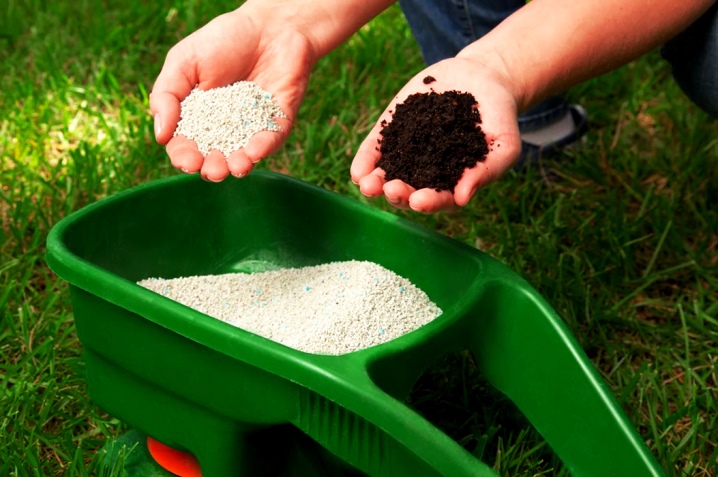
Pruning
Gazan pruning is done every spring (usually in early March) to preserve buds and reduce the number of side green shoots. Usually, all gazania sprouts are subject to pruning - with the help of disinfected scissors, the shoots are cut to a height of 5 cm above the ground.
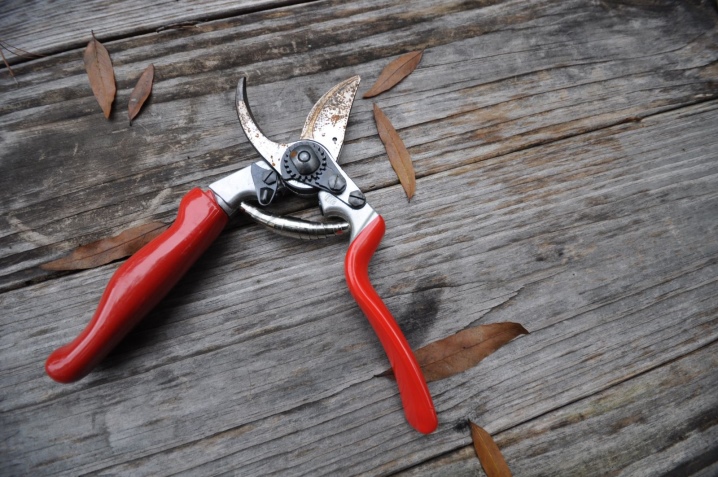
Wintering
Despite the fact that gazania is considered a perennial plant, its flowers are not able to withstand prolonged frosts and sudden temperature fluctuations. For the winter, this garden culture is usually dug up and placed in containers for storage at home. The next planting in open ground is carried out next spring - when the soil warms up and the nights become warmer.
When growing this flower at home, no additional effort is made for a painless wintering.
Growers are advised to reduce the amount of watering so as not to provoke active growth of greenery.
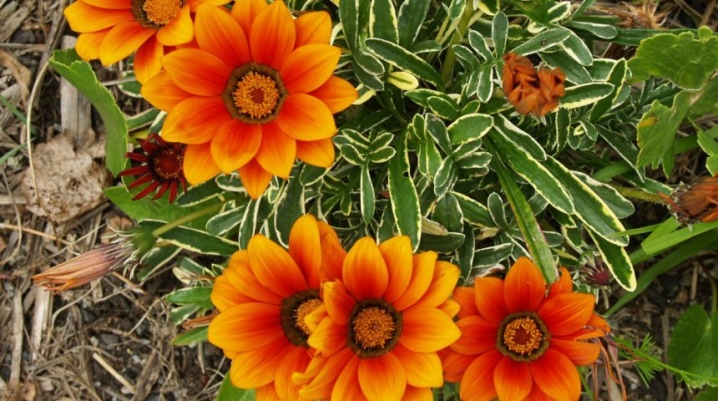
Features of growing a house in pots
Growing gatsania at home is slightly different from planting in a garden or at a summer cottage. Some changes relate specifically to the planting process, while others relate directly to the care of such plants.
- Bulky and deep pots or containers are best suited for planting gatsaniya. The main thing is that the container has holes for moisture removal. Large floor pots are not a bad option, however, in this case, the flower may not receive enough sunlight.
- For planting this flower in pots, standard potting substrates may not work. The ideal soil composition should include peat, sand and meadow soil.
- In addition to the holes for moisture escape, a drainage layer of 2-3 cm is necessarily organized in the pots.
- At home, watering is carried out more often than in the open field. This is due to the lack of rain and low humidity, which is typical for all homes. Usually, watering of plants is carried out no more than 1 time a week, in winter the regularity decreases.
- The best place for active flowering of gatsania will be a well-lit balcony or loggia. The place should be warm and well ventilated, but free from drafts.

Possible problems
Gazania, despite the low requirements for regular care, can hardly be called a problem-free plant. Most of the difficulties relate to the lack of flowering, problems with the wintering of these flowers, or the appearance of pests.
- Lack of flowering. Unfortunately, in this case, the problem is rather complex and concerns a number of factors that can affect the number of buds or their absence. Among the most common reasons are: the choice of a late-flowering variety; incorrect planting dates, which is why the plant simply does not have time to bloom before frost; insufficient lighting, which directly affects the abundance and saturation of the buds; feeding with nitrogen fertilizers, which stimulate the development of the shoots of the flower, and not the buds.
- Wintering. Inexperienced gardeners, when buying gatsania, are content with the knowledge that it is a perennial plant, and therefore can tolerate wintering. Unfortunately, it is this garden culture that in most cases needs home storage in order to survive the cold. Everything is explained by the warm homeland of this garden culture, where it can grow in peace all year long. Before buying a certain type of gazania, ask if it is frost-resistant.
- Diseases and pests.If we talk about diseases, then gazania is most often exposed to gray rot or black legs. These are fungal diseases that appear from excess moisture or can be introduced into the soil before the seedlings are planted. Antifungal drugs and fungicides will help against these diseases. Among the pests on gatsania, you can sometimes find aphids or spider mites. Aphids can be removed by hand and the bush can be poured with warm water, but ticks must be fought with insecticides.
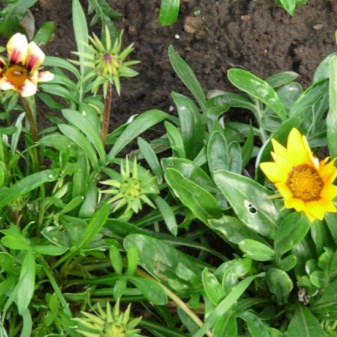
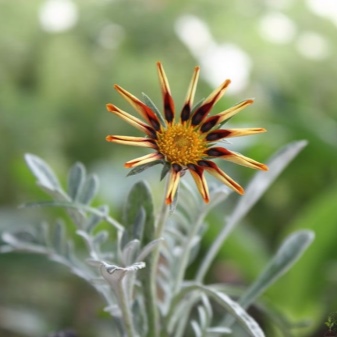
Planting and caring for gazania in the next video.


































































































The comment was sent successfully.